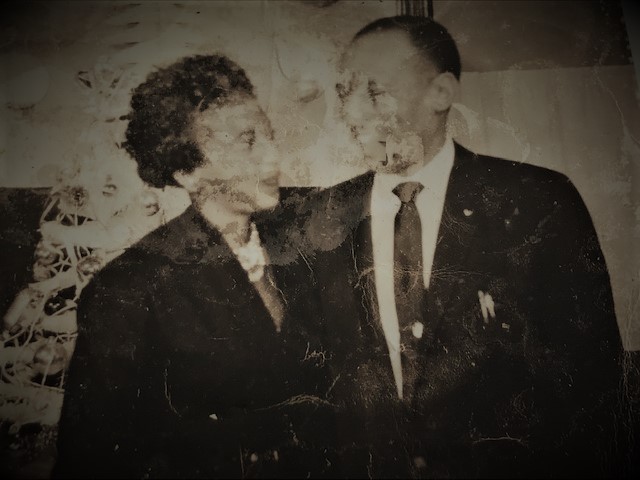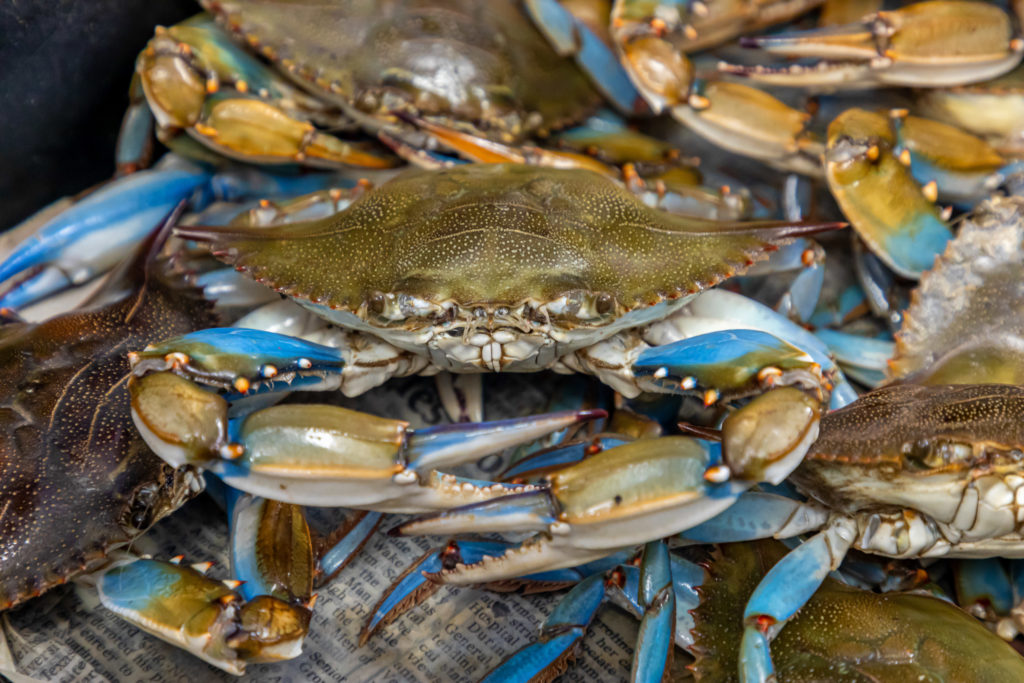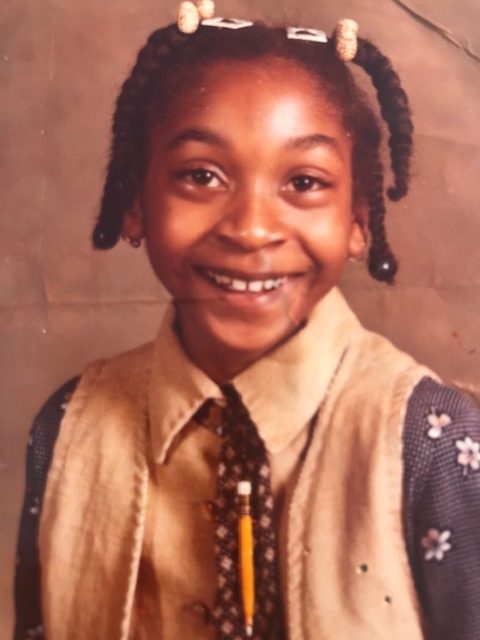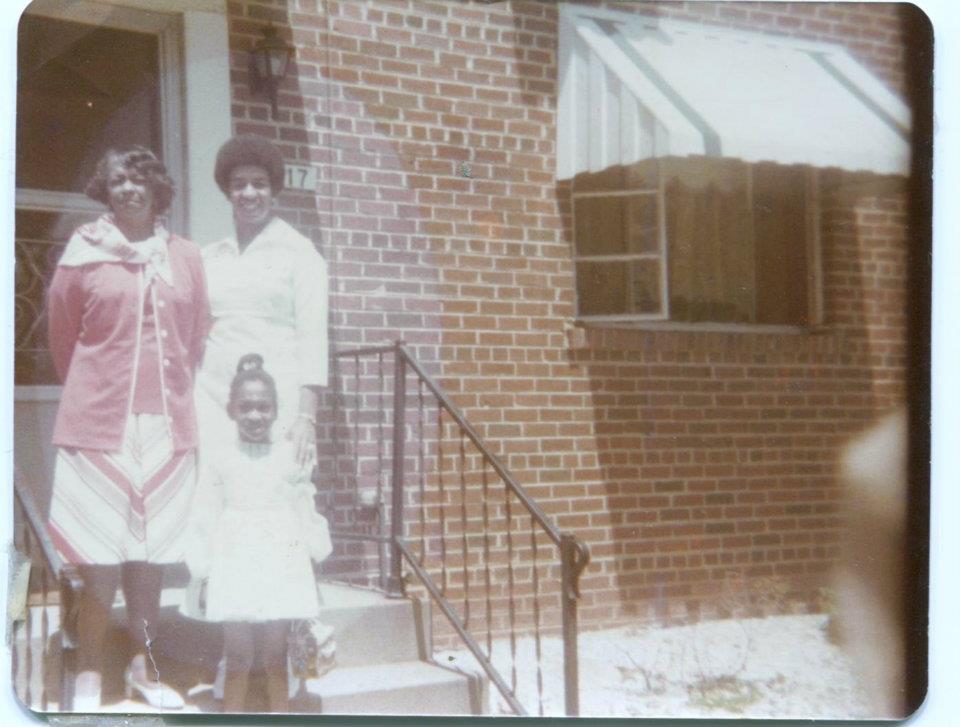
Today marks forty-one years since my grandmother, Annie Ruth Hankins, died. She was one year older than I am now. I have few memories of her, but those I do have serve as explanation and inspiration for the many things that define me.
Annie Ruth and my great-grandmother raised me for the first eight years of my life. My mother worked and attended nursing school in Washington, D.C. during the majority of my childhood. Mick, the family nickname for my mother, was a voice on the phone on Sunday evenings and summer vacation visits. Annie Ruth prepared breakfasts, supervised baths, and selected school clothing. I can smell the liver pudding, grits, and scrambled eggs she made for me before I walked out the door on my way to school. Annie Ruth made sure before I left the house my hair was plaited with bows and ponytail holders, my clothes were ironed to the point of being sharp enough to cut, and somewhere on my person was a pin. Be it of a pencil, a school bus, or a kitty cat, it was on my person. Mick was the theory while Annie Ruth was the reality of my maternal nurturing.
When I consider how intertwined my grandmother was in my early life, her initial reaction to me seems at odds. Mick told me the first time my grandmother saw me, she refused to hold me. Annie Ruth, a licensed practical nurse whose career was cut short by a diagnosis of lupus when she was in her thirties, expected her only child to create a new life for herself in Washington, D.C.. She didn’t expect that new life to arrive in the form of a six-pound baby girl. During our first visit when I was three months old, My mother says Annie Ruth didn’t say much. Mick said she flew back to D.C. under a cloud of maternal disappointment. However, those feelings seemingly evaporated during the spring of 1972 when Annie Ruth called and asked when her grandbaby was coming home.
While I had my grandmother Annie Ruth for a short period of my life, the strongest memory involves seafood. The Cape Fear River borders my hometown of Southport, North Carolina. Generations of my family and other members of the community earned their living through fishing and shrimping. Yet, for me, the high point of the time I spent with my Annie Ruth was when we went crabbing.
North Carolina aquacultural experts list blue crab fishing as North Carolina’s most valuable fishery. It earns this distinction based on the pounds landed and the revenue produced. The crustaceans dwell in all twenty-eight North Carolina coastal waters, but the Albermarle and Pamlico Sounds, a few hundred miles up the coast from my hometown, yield the largest catches.
When I was younger, my family owned a piece of water-front property. We called it ‘The Creek.’ It was a wide swarth of marshland connected to the Intracoastal Waterway. The family would gather on Sunday mornings in the summer to socialize and catch fresh seafood. We would pack snacks and play 70s R&B as we bumped down the dirt road to the water’s edge. Once we arrived, my aunts would sit on truck tailgates and talk, my older cousins would fling their lines to catch fish, and the younger children would attempt to collect blue crabs.

The method we used is called ‘chicken necking.’ It involved tieing a piece of chicken or turkey to a fishing line or thin rope. We would toss one end in the water and tie the other end to a piece of wood that we would be holding in our hands. Then, we watched for a pull, which indicated the crab had locked onto the bait. When that happened, we alerted an adult who would swoop in with a net and capture the crab
I remember Annie Ruth’s patient face as she instructed me how to tie the line so the crab wouldn’t just grab the morsel and go. She understood giving a child a task kept them engaged and less likely to wander from the group. Her lesson of paying attention to the line to watch for any motion lest the crab got away forced me to retain focus on the assignment. Taking heed to what life presents so the opportunity to obtain your goal doesn’t get away proves to have been applicable in numerous circumstances since then.
Annie Ruth’s enthusiasm when our efforts yielded good results caused me to beam in pride at my fishing ability. Keep in mind, for every crab I caught, my cousins produced dozens using traps flung further out into the water. We would stay at the creek for hours until everyone was either satisfied with the amount of seafood caught or tired of being bit by mosquitos. The family would then move to my Aunt Lizzie Mae’s, where we would sprawl out in the back yard to enjoy the bounty. When I close my eyes, I can still hear my grandmother laughing. It is such a pleasant memory.
Depending on the catch, we either boiled the crabs along with seafood seasoning. If we managed to get crabs in between molting when the shells were soft, we would dip them in batter and fry them. I later learned soft shell crab is a delicacy. Back then, it was simply dinner.
As an adult, I realize those days when my grandmother Annie Ruth found herself able to enjoy herself were rare. Lupus flareups cause sufferers to struggle to perform daily tasks. It causes painful, swollen joints and hair loss. My grandmother’s disease also caused her to develop Raynaud’s phenomenon in her hands, but she still managed to do my hair every morning. Annie Ruth died the Monday before Thanksgiving–dinner wasn’t the same that year.
My family took more crabbing trips in the future, but after we sold the land, those trips ended.
We still get together to eat blue crabs. In fact, we ate blue crabs last month as part of a repass after my aunt Gloria’s funeral. Unfortunately, I left before the food finished cooking. Eating blue crabs has never been the same for me, so I cherish the memories of my grandmother and the lessons she taught me.



You must be logged in to post a comment.